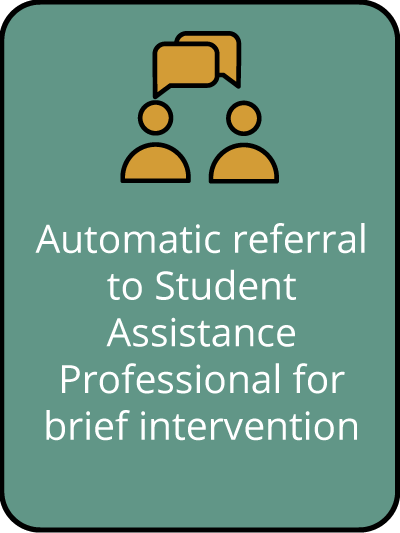
Having an intervention pathway planned before a student is found using substances ensures an equitable and fair consequence. Below are the recommended intervention pathways for schools to implement following a substance use incident. The goal of all pathways is to connect youth with substance use education and follow up with resources while taking staffing capacity of schools into consideration. We recommend using these resources for first time offenses in lieu of suspension.
Choose the yellow tab below that best describes staffing at your school.
Intervention Pathway for Schools with Student Assistance Professionals Employed by ESD 189
Intervention Pathway for Schools with Staff in Addition to School Counselors
(SSW, Mental Health Coordinator, Student Support Advocate, etc.)
Intervention Pathway for Schools with No Additional Staff Beyond a School Counselor
(such as: SSW, Mental Health Coordinator, Student Support Advocate, etc.)
This pathway takes into account evidence-based practice guidelines based on SBIRT, the Washington State Health Care Authority, and OSPI guidelines, while acknowledging staff capacity and limits of scope. Washington State Health Care Authority.
(2018). Washinton’s Best Practices for Substance Abuse Prevention and Mental Health Promotion. Washington State Health Care Authority. Retrieved 2024, from https://theathenaforum.org/best_practices_toolkit; Evidence supporting the effectiveness of an SBIRT. Samhsa. (2011). https://www.samhsa.gov/sites/default/files/sbirtwhitepaper_0.pdf.; Substance Use Prevention & Intervention. Office of Superintendent of Public Instruction. (2023). https://ospi.k12.wa.us/student-success/health-safety/school-safety-center/mental-social-behavioral-health/substance-use-prevention-intervention









